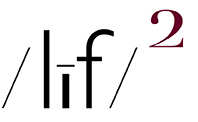can you see the alchemist at work? ~ all photos (embiggenable)
“The most beautiful thing we can experience is the mysterious. It is the source of all true art and science. He to whom the emotion is a stranger, who can no longer pause to wonder and stand wrapped in awe, is as good as dead-his eyes are closed.” ~ Einstein
I HAVE PREVIOUSLY WRITTEN THAT I AM NOT a fan of hi-def photographs. That is photographs which make obvious extreme fine detail and resolution. To my eye and sensibilities they often tend to illustrate everything but reveal nothing. A good example of such is in the comment made by a gearhead who wrote about one of his pictures…
…look closely at the fabric on the side of the hat. The detail is there.
Unless the picture was made for the hat manufacturer-fyi, it was not-then capturing the fine fabric is critical to the picture making mission. However, if the mission is to incite an emotional / mental involvement from the non-fabric obsessed viewer or, the non-photo technique obsessed viewer, iMo, who gives a crap about the fabric detail?
And, I might add, looking “closely”at a picture is a sure-fire recipe for missing what a photograph might be “about”. That’s cuz a good photograph is all about the collective visual sum of its parts, not the parts in and of their literal selves. iMo, in a really good photograph, when the sum is good, the overall effect can draw the viewer’s eye across the field of the print in order to investigate some of the parts - an activity that I label as experiencing a photographs visual energy.
All of that written, it explains why I have never been in pursuit of making photographs that exhibit ultra hi-def or, for that matter, photo technique “perfection”. That’s cuz I believe that the best photographs are those that have, albeit most often subtle, a sense of the mysterious. That is to mean, mysterious in the sense of being somewhat enigmatic, i.e. difficult to understand or explain cuz, ya know, some things are best left to a viewer’s imagination.
I know that I am successful in that pursuit cuz, at exhibitions of my photographs or when someone is viewing one of my POD books, the single most common comment / reaction I hear is, “Why did you take a picture of that?” (mystery #1). Followed by, “I don’t know why I like it, but, I do.” (mystery # 2). Reactions that are the result of the fact that my photographs are not stating the obvious. As in, ain’t pictures of beautiful things beautiful.
To be certain, my photographs are not in any manner in the same mystery league as, say, the grand mysteries of the universe. However, I do believe that I am exploring the little mysteries of how the quoditian, aka: everyday life, can mysteriously present, to those whose eyes are not closed, “quiet,” little vignettes that, when pictured with a sense of creating interesting form, produce prints of surprising visual beauty…
…a perfect example of the medium’s alchemistical ability-something of a mystery or is it magic?-to facilitate the nearly inexplicable or mysterious transmutation of the commonplace into the exceptional.
The fact that my eye and sensibilities are captivated by those seeming mysterious “presentations” is, believe it or not, after all these years still a mystery to me.
*aka: navel gazing - the practice as an aid to contemplation of basic principles of the cosmos and human nature
